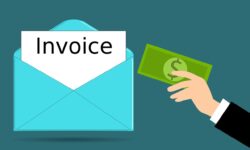Last updated on February 11th, 2024 at 04:58 pm
Recognizing employees’ hard work and dedication is crucial in any workplace. A well-crafted employee thank you email can boost morale and show genuine appreciation. This guide offers a step-by-step approach to writing the perfect thank-you email.
It’s designed to help you convey your gratitude effectively and sincerely. Whether it’s for a job well done, extra effort on a project, or consistent performance, this guide will assist you in crafting a thank you email to your staff quickly.
Understanding the Purpose of a Thank You Email
Appreciating employees is more than a nice gesture; it’s a powerful strategy for building a positive workplace culture.
Thank you emails serve as tangible recognition of an employee’s hard work and commitment. They reinforce the value of their contributions, making them feel seen and appreciated. This help boost morale and foster a sense of belonging and purpose among the team.
It’s essential to recognize that thank you emails are not just for extraordinary achievements. They are necessary for acknowledging consistent performance, celebrating milestones, and appreciating the effort put into daily tasks.
For instance, thanking an employee for successfully leading a project, going above and beyond in customer service, or even their dependable presence and steady work ethic can be very motivating.
Also Read: Here Is Why You Should Send a Thank You Email to Your Staff
Employee thank you emails also play a crucial role in employee retention. In today’s fast-paced work environment, where employees often feel under pressure, a simple thank you can make them feel valued. It’s a reminder that their hard work doesn’t go unnoticed and that they are a vital part of the organization’s success.
Moreover, thank you emails help in creating a positive work environment. Employees who feel appreciated are more likely to reciprocate with increased loyalty and productivity. It creates a ripple effect, encouraging others to strive for excellence. It can also contribute positively to the team.
Read More: Proven Strategies for Employee Engagement (That You Must Know)
Writing the Employee Thank You Email: Step-by-Step Process
Crafting the perfect thank you email involves several key components, each crucial in conveying your message effectively.
Subject Line
The subject line is your first opportunity to grab the recipient’s attention. It should be clear, concise, and reflective of the email’s content. Consider using the employee’s name and a positive phrase like “Great Job” or “Thank You for Your Exceptional Work” to make it personal and direct.
Greeting
Personalize your greeting. Instead of a generic “Dear Employee,” use the person’s name, like “Hello [Employee’s Name],” to establish a personal connection from the outset.
Opening Line
Begin with a warm and sincere tone. A statement like “I wanted to take a moment to express my sincere gratitude for…” sets the right tone for the rest of the email.
Body of the Email
This section details the specific achievements or actions you’re acknowledging. Discuss how the employee’s work has positively impacted the team or project. It’s essential to be clear about their contributions, creativity, leadership in a recent project, or consistent performance. The key is to make the employee feel seen and understood for their specific efforts.
Closing Remarks
Conclude your email on a positive and forward-looking note. Encourage the employee by expressing your eagerness to see their continued growth and contributions. A statement like, “I’m looking forward to our continued collaboration,” or “I can’t wait to see what you will accomplish next” can be very encouraging.
Signature
End with a professional yet warm sign-off. “Best regards,” “Sincerely,” or “With appreciation,” followed by your name, adds a professional touch while maintaining the warmth of the message.
This structure ensures that your thank you email is not only heartfelt but also professional and impactful. It guides the employee through your appreciation journey, making them feel genuinely valued and motivated.
Also Read: A Small Business Guide to Writing Employee Appreciation Emails
Tips To Personalize Employee Thank You Emails
Tailoring your thank you email to the recipient’s personality and role is crucial for making your message resonate more deeply. Personalization shows that you recognize and value the employee as an individual, not just as a part of the workforce.
1. Consider the Employee’s Role and Contributions
The content of your thank you email should reflect the unique role and contributions of the employee. For instance, if you’re thanking a team leader, focus on their leadership qualities and how they’ve fostered teamwork. For a creative professional, highlight their innovation and the fresh ideas they’ve brought to the table.
2. Reflect Their Personality
If the employee has a great sense of humor, including a light-hearted comment or a witty remark might be appropriate. If they’re more serious and focused, a straightforward, sincere approach might be better. The key is to align your message with the recipient’s personality, making it feel more genuine and heartfelt.
3. Include Personal Anecdotes
If you have shared experiences or have witnessed the employee’s growth over time, mentioning these can make your email more personal and touching. For example, you could reference a challenging project that you worked on together and how their contribution was invaluable.
4. Acknowledge Their Future Potential
By thanking them for past and present contributions, express your confidence in their potential. This shows appreciation for what they’ve done and your belief in what they can achieve moving forward.
Personalizing your thank you email in these ways demonstrates that you’ve taken the time to consider what makes each employee unique. This thoughtful approach can significantly enhance the impact of your message, making the employee feel truly appreciated and valued.
Employee Thank You Email Templates
Certainly! Here are ten sample thank you emails, each tailored to different scenarios and employee traits, following the principles outlined earlier:
For Consistent Performance
Subject: A Big Thank You for Your Steadfast Dedication, [Employee’s Name]
Hello [Employee’s Name],
I wanted to take a moment to express my sincere gratitude for your consistent performance and reliability. Your dedication to maintaining high standards in our daily operations has not gone unnoticed.
Your efforts have contributed significantly to our team’s success, and I am genuinely thankful for your unwavering commitment.
Looking forward to more of your valuable contributions!
Best,
[Your name and designation ]
For Leadership in a Project
Subject: Outstanding Leadership – Thank You, [Employee’s Name]
Hi [Employee’s Name],
I am writing to acknowledge and thank you for your exceptional leadership in the [Project Name]. Your ability to coordinate with the team and navigate challenges was remarkable. Your dedication and strategic thinking were key to our project’s success.
Thank you for setting such a high standard for us all.
Best,
[Your name and designation ]
For a Creative Solution
Subject: Your Creative Insight Made a Difference, [Employee’s Name]!
Dear [Employee’s Name],
Your recent contribution to [Project or Problem Solved] was nothing short of brilliant. The creativity and out-of-the-box thinking you demonstrated were instrumental in achieving our goals.
I am truly impressed by your innovative approach and want to express my gratitude for your invaluable input.
Best,
[Your name and designation ]
For Excellent Customer Service
Subject: Kudos for Exceptional Customer Service, [Employee’s Name]
Hello [Employee’s Name],
I’ve received feedback about your outstanding service from our clients, and I couldn’t be prouder. Your professionalism and dedication to customer satisfaction are exemplary. Your efforts not only delight our clients but also set a great example for the team.
Thank you for going above and beyond!
Best,
[Your name and designation ]
For Handling a Difficult Situation
Subject: Thank You for Your Resilience and Skill, [Employee’s Name]
Dear [Employee’s Name],
I would like to express my gratitude for how skillfully you handled the recent [specific situation]. Your ability to stay calm and solution-oriented in challenging times is a testament to your strength and resilience.
Thank you for your hard work and dedication.
Best,
[Your name and designation ]
For Team Collaboration
Subject: A Heartfelt Thanks for Being a Team Player, [Employee’s Name]
Hi [Employee’s Name],
Your collaborative spirit and ability to work seamlessly with your peers have significantly contributed to our team’s success. I appreciate your willingness to support your colleagues and share your insights always.
Your teamwork is genuinely valued and does not go unnoticed.
Best,
[Your name and designation ]
For Going Above and Beyond
Subject: Your Extra Effort Has Made All the Difference, [Employee’s Name]
Hello [Employee’s Name],
I want to take this opportunity to thank you for going above and beyond in your role, especially during [specific instance]. Your extra effort and commitment have significantly impacted our team’s success.
Your hard work is greatly appreciated and sets a wonderful example for all.
Best,
[Your name and designation ]
For Improving a Process
Subject: Innovative Thinking Appreciated, [Employee’s Name]
Dear [Employee’s Name],
I’m writing to thank you for your innovative approach to improving [specific process or system]. Your ideas and execution have enhanced efficiency and productivity in our team. This kind of initiative is what drives our company forward.
Thank you for your outstanding contribution.
Best,
[Your name and designation ]
For Mentorship
Subject: Thank You for Being an Inspiring Mentor, [Employee’s Name]
Hi [Employee’s Name],
Your role as a mentor in our team has been invaluable. Your guidance and wisdom to newer team members have significantly contributed to their growth and confidence.
I am deeply appreciative of your dedication to nurturing talent within our team.
Best,
[Your name and designation ]
For Adaptability
Subject: Admiration for Your Adaptability, [Employee’s Name]
Hello [Employee’s Name],
I want to express my admiration for the adaptability you’ve shown in the face of changing circumstances, especially regarding [specific situation]. Your flexibility and positive attitude have helped us navigate these changes smoothly.
Thank you for being such a dependable and versatile member of our team.
Best,
[Your name and designation ]
Each of these emails reflects a specific scenario, acknowledging the individual strengths and contributions of employees in a personalized and sincere manner.
Also Check: Employee Appreciation Email Examples
Common Mistakes to Avoid When Writing an Employee Thank You Email
When crafting a thank you email, certain pitfalls can diminish the impact of your message. Being aware of these common mistakes can help ensure your email is both effective and well-received.
Avoid Generic Messages
One of the biggest mistakes is sending a thank you email that feels generic and impersonal. Avoid using boilerplate language or templates that don’t address the specific contributions of the employee. Personalization is critical to making your message feel sincere.
Steer Clear of Excessive Flattery
While it’s important to praise and acknowledge the employee’s contributions, overdoing it can come across as insincere. Keep your compliments genuine and proportional to their achievements.
Don’t Overlook the Tone
The tone of your email should strike a balance between professional and warm. Too formal, and it might seem cold; too casual, and it might lose its professional touch. Aim for a tone that reflects appreciation and respect.
Be Timely in Your Acknowledgment
Delayed appreciation can lose effectiveness. It’s essential to send a thank you email while the achievement or effort is fresh. This shows that you are attentive and truly value their contributions.
Avoid Making Comparisons
Thanking an employee by comparing them to their colleagues can create an uncomfortable workplace dynamic. Focus solely on the individual’s achievements and qualities.
Don’t Forget To Proofread
Grammatical errors or typos can detract from the sincerity of your message. A well-written, error-free email shows that you have taken the time and care to craft your message.
By avoiding these common mistakes, your thank you email will convey genuine appreciation and maintain the professional integrity of your communication.
FAQs About Employee Writing an Employee Thank You Email
How do you write an employee appreciation email?
To write an effective employee appreciation email:
- Begin with a personalized and engaging subject line.
- Address the employee by name in the greeting for a personal touch.
- In the body, be specific about what you are thanking them for, highlighting their unique contributions or achievements.
- Use a sincere and warm tone to convey genuine gratitude.
- Mention the positive impact of their work on the team or project.
- Conclude with a positive, forward-looking statement, and end with a professional yet friendly sign-off.
Personalization and sincerity are crucial to making your employee thank you email resonate with the employee.
Also Read: How To Write An Employee Rejection Email (A Step-By-Step Guide)
How do you send a thank you email at work?
To send a thank you email at work, first compose your message following the key principles of appreciation: personalization, specificity, and sincerity. Start by addressing the recipient by name and then clearly state your reason for thanking them, focusing on their specific contributions or actions. Ensure the tone is warm yet professional.
After writing your email, double-check for any grammatical errors or typos to maintain professionalism. Once the email is ready, use an appropriate subject line reflecting the content of your message, making it clear and engaging.
Finally, send the email at a suitable time, preferably during working hours, to ensure it is timely and receives the attention it deserves.
How do you express gratitude in a professional email?
In a professional email, express gratitude by being specific about what you’re thankful for and its impact on your work or team.
Start with a warm greeting, then clearly state your appreciation, focusing on the recipient’s specific actions or contributions. Use a sincere tone, avoiding over-the-top praise to maintain professionalism.
Conclude with a positive remark or a forward-looking statement, and sign off respectfully. This approach ensures your gratitude is conveyed effectively while maintaining a professional tone.
How do you tell an employee thank you?
To tell an employee thank you, communicate your appreciation clearly and sincerely. Acknowledge their specific contributions or achievements, highlighting how their actions have positively impacted the team or project.
Use a personal and warm tone to convey sincerity. You can express your thanks in various ways, such as a personalized email, a handwritten note, or a verbal acknowledgment in a meeting.
The key is to make the employee feel genuinely valued and seen for their individual efforts and accomplishments.
Writing Employee Thank You Emails Explained
Crafting the perfect thank you email requires thoughtfulness, specificity, and sincerity. You can effectively convey your appreciation by personalizing your message, acknowledging specific contributions, and maintaining a professional yet warm tone.
Remember, a well-timed and sincere thank you can significantly impact an employee’s experience and motivation. So, take the time to recognize and appreciate the efforts of your team members; it’s a small effort that can yield substantial positive results in your workplace culture.
Additional Resources:
- How To Write Congratulations Messages for Employee of the Month
- Employee of the Month Quotes You Can Use Right Away
- How To Write Congratulations Emails for Promotions of Your Friends
- Why Listening to Employees Is Important (and How To Do It)
- How To Craft an Employee Farewell Email
- Employee Appreciation Quotes You Can Use Quickly



